PEST FACTS AND IMPACT ON CROP
- Latin name: Agrotis ipsilon
- The black cutworm is the major cutworm of the Corn Belt – similar species are found worldwide
- Black cutworms eat many plants, including corn, cotton, tobacco, vegetables, weeds and turf grasses
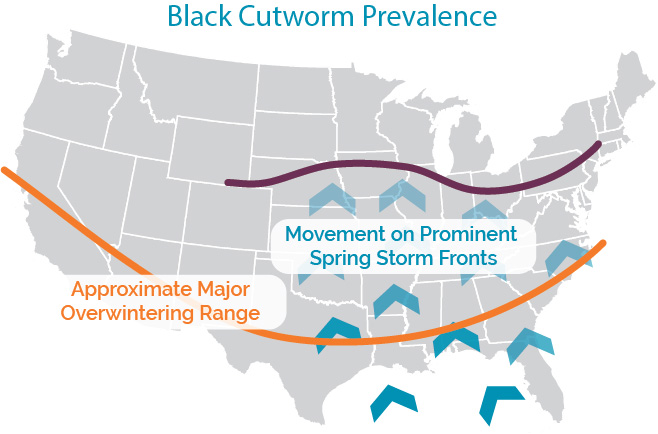
PEST SYMPTOMS
- Small larvae chew holes in leaves
- Fourth stage or olderlarvae exceed the widthof a dime in length, andcan begin cutting V1 toV5 stage plants
- Drilling into V6-V8 stage plants can kill growing point
- Cutting mostly above ground in wet soil, mostly below ground in dry soil
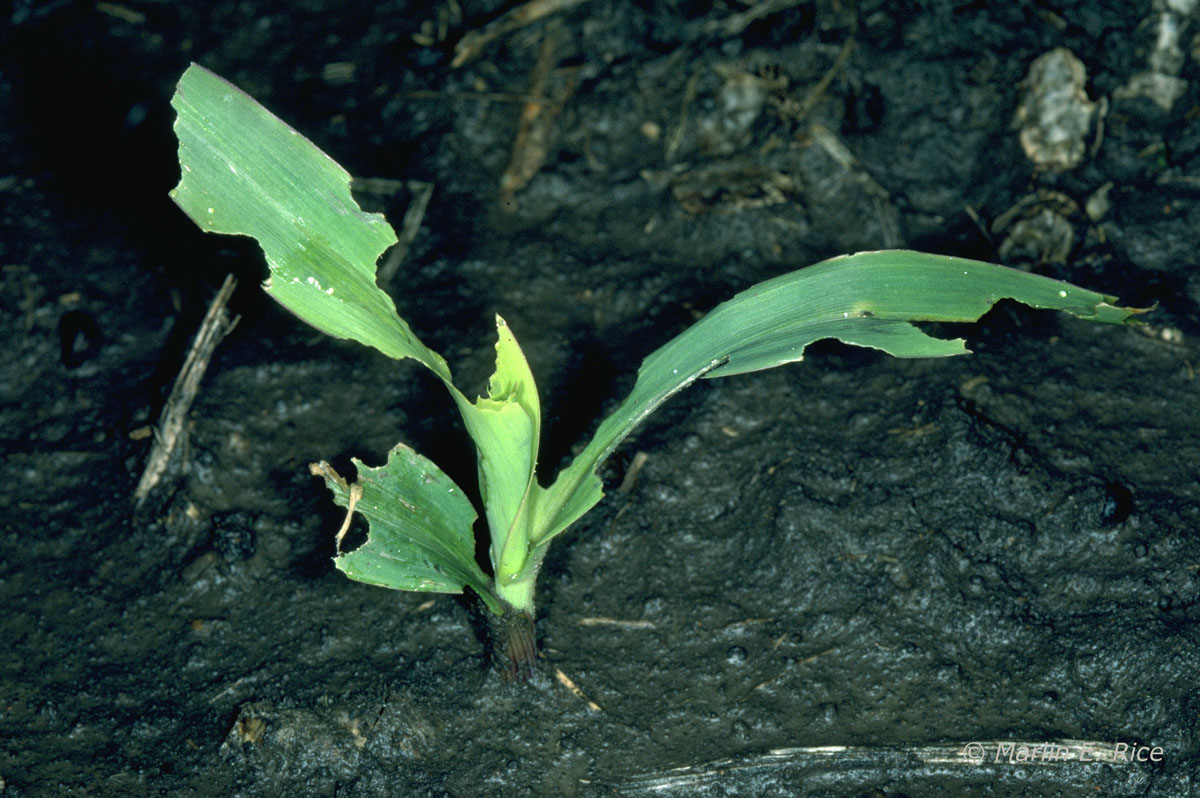 Figure 1. Black cutworm damage to a corn plant. Figure 1. Black cutworm damage to a corn plant. |
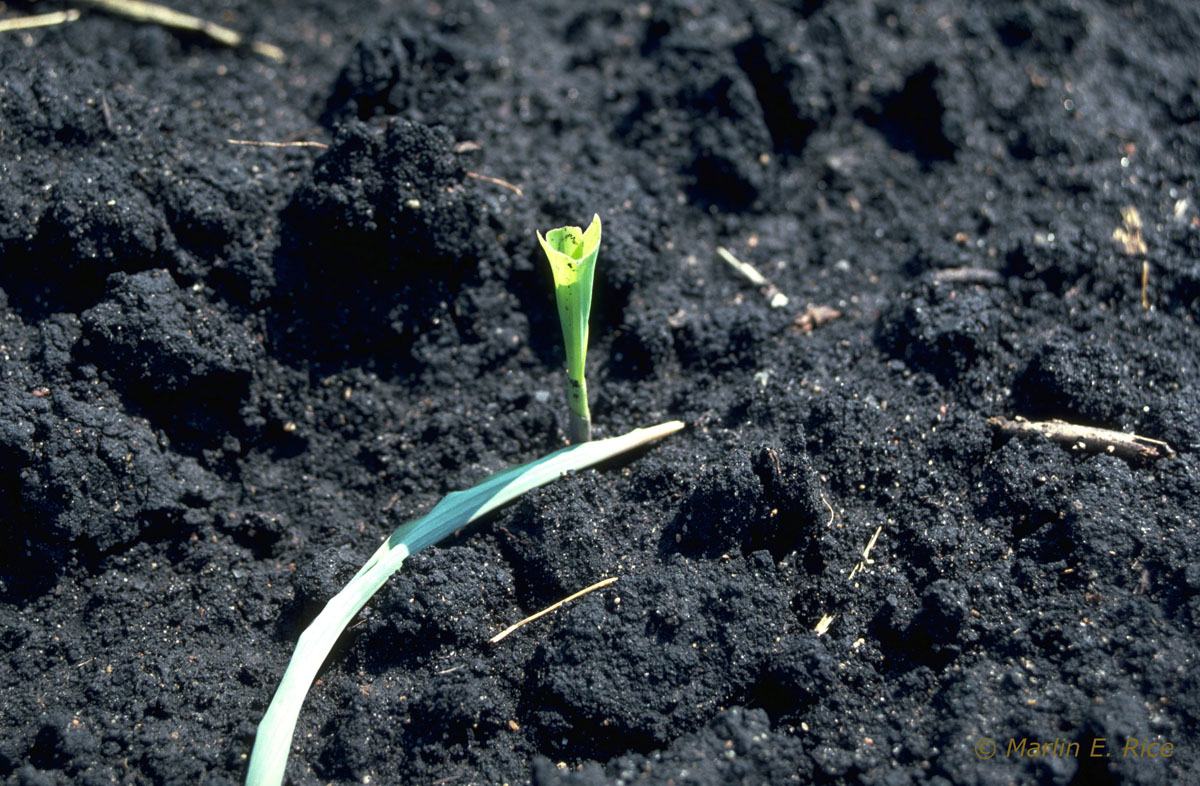 Figure 2. Recovery after being cut above the growing point Figure 2. Recovery after being cut above the growing point |
PEST ID
Key characteristics
- Adult forewings with dagger-shaped marking and kidney- shaped spot
- Larvae are black/gray and grow to 1 5/8 inches
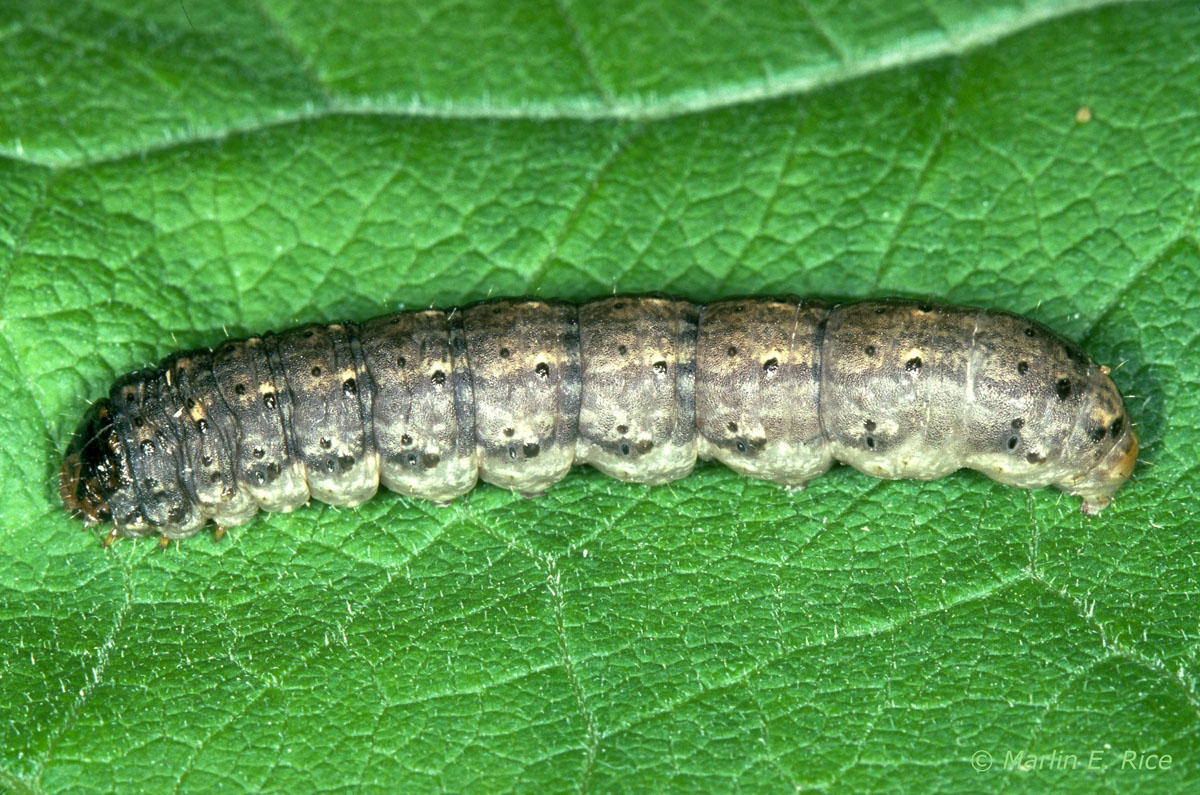 Figure 3. Black cutworm Figure 3. Black cutworm |
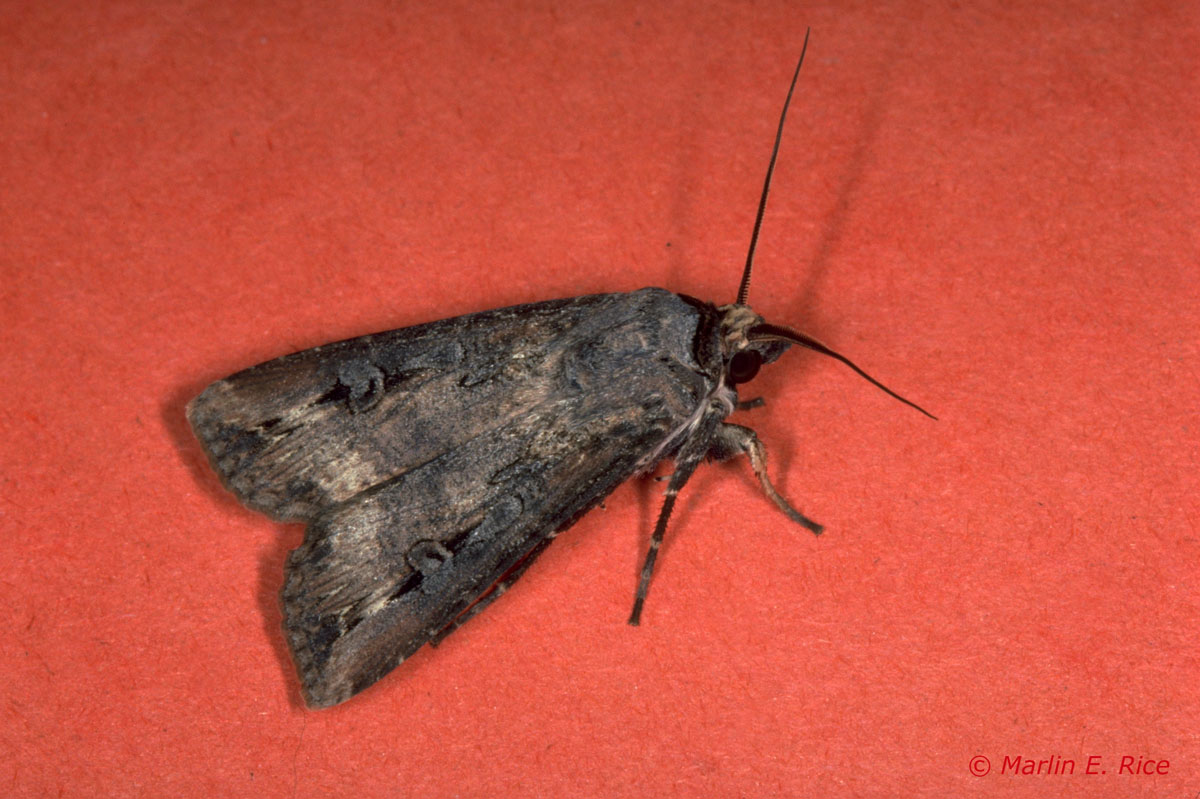 Figure 4. Black cutworm moth and wing close-up Figure 4. Black cutworm moth and wing close-up |
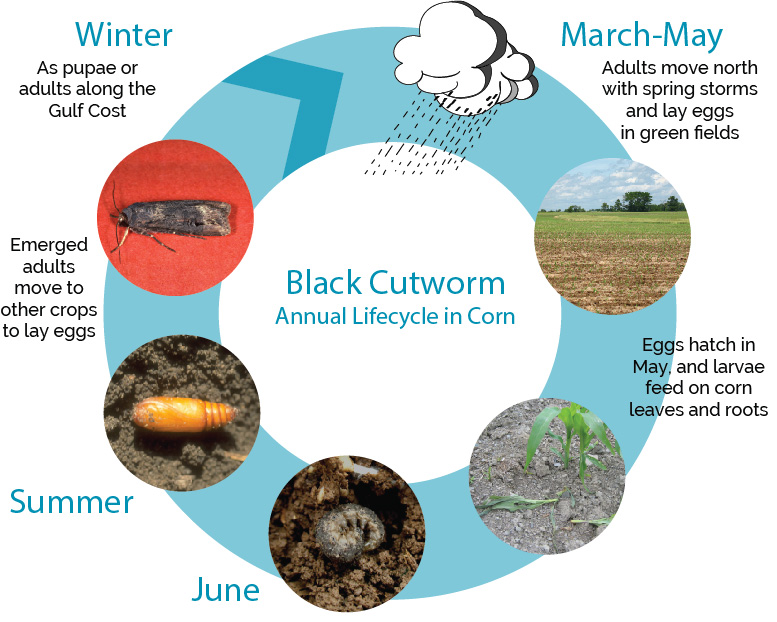
- Favorable conditions for pest occurrence would be spring storms prior to tillage and planting delivering moths to the area
- Monitor moth flight reports
- Kill existing vegetation nine or more days prior to planting to reduce larval survival
- Natural enemies are generally birds and other predators, though they’re not usually effective
- IPM practices
- Pheromone trapping is used to determine when the pest is present
- Intensively scout fields that are at risk
- Reduced tillage or other practices that leave a food source for the young larvae increase risk
- Insecticide seed treatments at high rates may give some control, but lower rates are not as effective
- Broadcast pesticide or bait application may be used as a rescue treatment
MANAGEMENT WITH TRAITED PRODUCTS
Brevant® brand PowerCore® Enlist® corn products offer increased protection against black cutworm, plus an additional mode of action on all key lepidopteran pests.
- Corn products with the Herculex® I trait have very good protection against black cutworm.
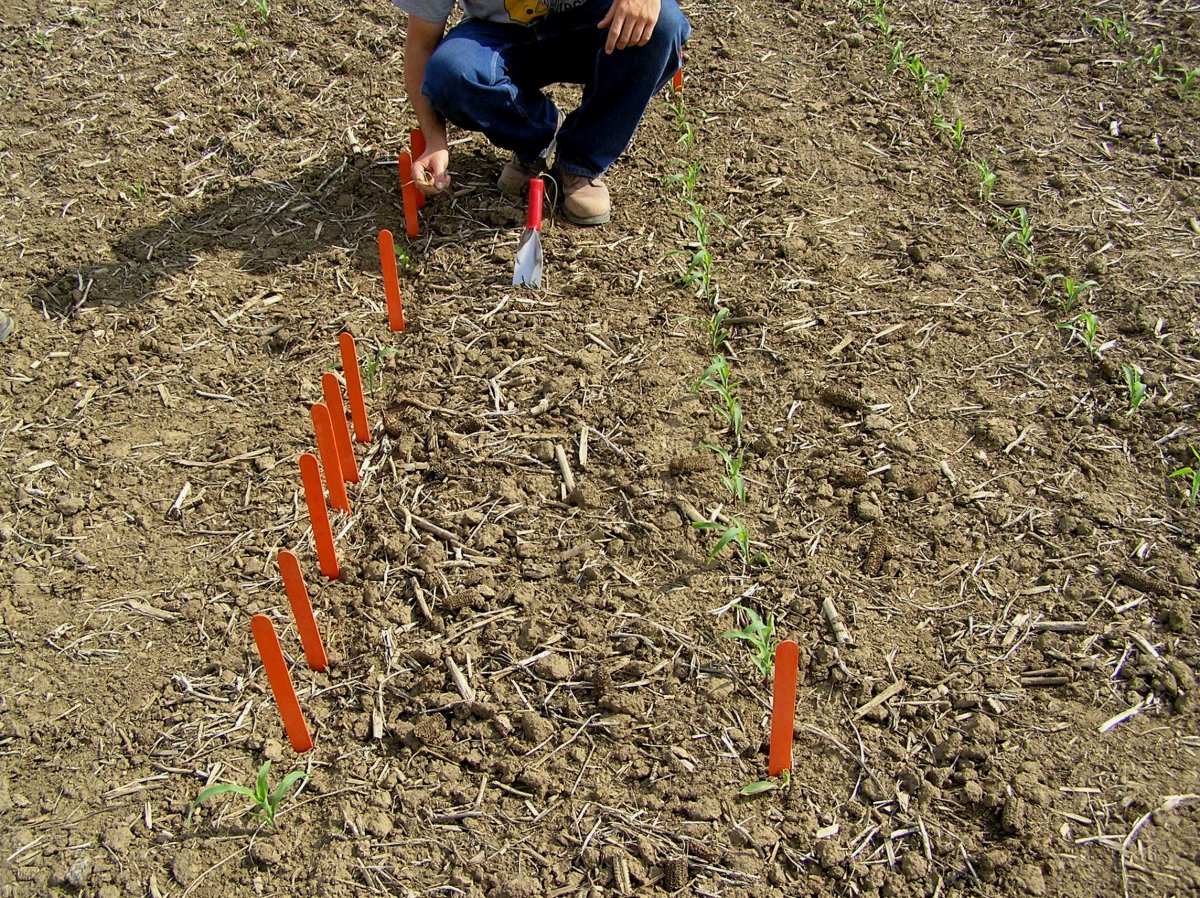 Figure 5. A corn hybrid with the Herculex® I trait (right), part of the PowerCore Enlist stack, compared to a susceptible hybrid (left) under black cutworm pressure. Orange stakes indicate cut plants. Figure 5. A corn hybrid with the Herculex® I trait (right), part of the PowerCore Enlist stack, compared to a susceptible hybrid (left) under black cutworm pressure. Orange stakes indicate cut plants. |

Herculex® Insect Protection technology by Dow AgroSciences and Pioneer Hi-Bred. Herculex® and the HX logo are registered trademarks of Dow AgroSciences LLC.
The foregoing is provided for informational use only. Please contact your sales professional for information and suggestions specific to your operation. Product performance is variable and depends on many factors such as moisture and heat stress, soil type, management practices and environmental stress as well as disease and pest pressures. Individual results may vary.
®™Trademarks of Corteva Agriscience and its affiliated companies. Always read and follow label directions. ©2024 Corteva. 020850 COR-MCS (04/24)

 Figure 1. Black cutworm damage to a corn plant.
Figure 1. Black cutworm damage to a corn plant. Figure 2. Recovery after being cut above the growing point
Figure 2. Recovery after being cut above the growing point Figure 3. Black cutworm
Figure 3. Black cutworm Figure 4. Black cutworm moth and wing close-up
Figure 4. Black cutworm moth and wing close-up
 Figure 5. A corn hybrid with the Herculex® I trait (right), part of the PowerCore Enlist stack, compared to a susceptible hybrid (left) under black cutworm pressure. Orange stakes indicate cut plants.
Figure 5. A corn hybrid with the Herculex® I trait (right), part of the PowerCore Enlist stack, compared to a susceptible hybrid (left) under black cutworm pressure. Orange stakes indicate cut plants.